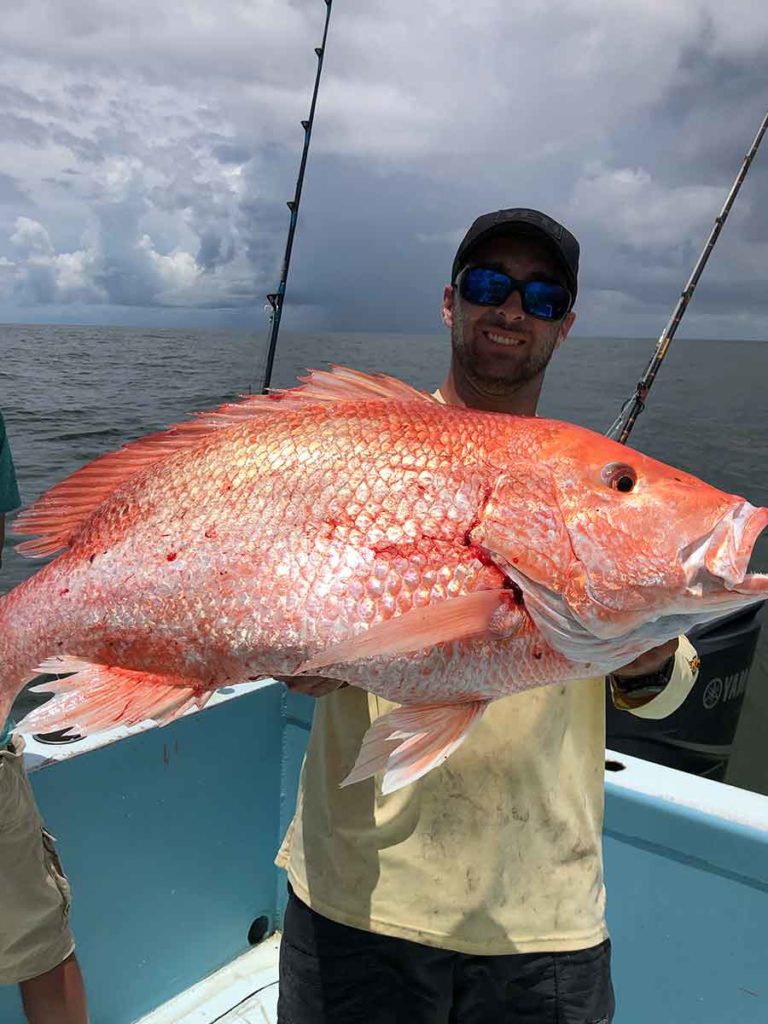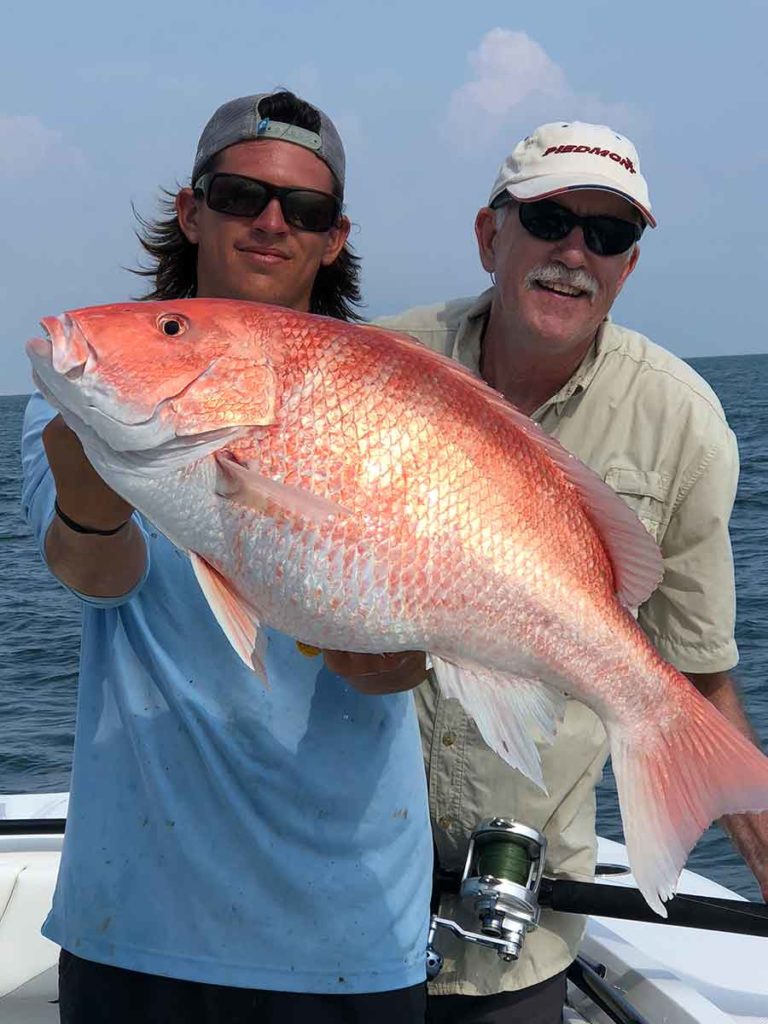CALL the CAPTAIN
There is simply no other place on earth with better snapper fishing grounds than Venice, LA. The nearshore Gulf of Mexico waters are teaming with American Red and Mangrove snappers – it’s common to catch the limit within two hours of fishing – sometimes faster.
Just offshore from Venice, LA is a vast array of pumping stations, which provide the perfect structure for enormous schools of voracious American Red Snappers. Considered to be the “best eating” fish in the Gulf of Mexico.


Snapper Fishing Charters are the ideal experience for families who are interested in “filling the cooler” but are not well suited for the intensity of chasing tuna or wahoo fishing, more than 40 miles offshore. Catching the limit of American Red Snapper and Mangrove Snappers is a fast-paced, satisfying, and memorable fishing experience for anglers of all ages, and skill levels. Red snappers are typically caught on light to moderate fishing tackle while bottom fishing, which makes for an exciting battle.
American Red Snapper and Mangrove Snapper (among other bottom and structure-based species in the Gulf of Mexico) can be caught year-round, but there is a specific season in which anglers are allowed to keep fish. The American Red Snapper population is tightly regulated, in order to protect this species from being overfished. Before booking a snapper fishing charter in Venice, LA, please call Captain Hunter to confirm that the Red Snapper season is open.
Casting topwater lures to pelagic fish that are aggressively feeding on the surface is an unparalleled thrill in the world of sportfishing. Predatory fish that actively feed on surface baits are ferociously powerful and often attracted to the “injured” motion a lure can present when skipping across the surface. This fishing style requires long-distance casting and rapid retrieval of large lures – making use of heavy-duty spinning tackle which can withstand immense pressure. Many pelagic species caught at the surface can be extremely acrobatic once hooked. Watching a “fired up” fish charge a surface lure is an incredible experience that should not be missed.
The traditional style of creating a “chum line” of chunk baits is commonly used around oil rigs, pumping stations, and drillships to attract a variety of pelagic species. Essentially, this is essentially “handlining” for deep water species, which requires the angler to pull 3 to 4-foot segments of line off the reel at a time, allowing the rigged bait to float with the current. This technique requires some practice but is incredibly effective when fish are feeding in the top level of the water column. Once a fish strikes the bait, the angler must “lock-up” the drag smoothly and swiftly, in order to allow a circle hook to set. With patience and dedication, almost any angler can master this technique.
Tried and true, trolling for pelagic species requires deploying artificial or rigged dead baits and dragging them behind the boat at varying speeds. This can be a highly effective method for enticing large pelagic predators to bite and is usually employed during specific weather conditions or fishing around oil rigs or pumping stations. Occasionally, slow trolling live baits that are specially bridled can produce bites when tunas do not actively feed.
This is the preferred method for catching larger pelagic species. When fishing out of Venice, LA – mullet, pogies, threadfin herring, hardtails, and small tunas are exceptional live baits if properly rigged. There is no more effective technique to entice a large pelagic fish to feed than by presenting a frisky live bait at the surface. Catching live bait, depending on the time of year, can be a “must” before heading offshore. Live bait is typically caught by throwing a cast net or by using a sabiki rig. You will never find yourself in a situation where having live bait isn’t a decisive advantage when targeting pelagic species.
The most physically demanding of all fishing techniques, this requires the use of heavy lead jigs that are specifically designed to sink fast and reach fish several hundred feet down. The angler must rapidly retrieve the jig while creating a “fluttering” motion with the rod – this mimics the behavior of a baitfish fleeing to the surface. Vertical Jigging can be the most effective method for catching fish that are holding tight to structure, deep beneath the waves.
Just off the coast of Venice, LA, where the Mississippi opens into the Gulf of Mexico, nearshore pumping stations, shipwrecks, rockpiles, and submerged pipelines provide sanctuary to enormous schools of snappers.Just off the coast of Venice, LA, where the Mississippi opens into the Gulf of Mexico, nearshore pumping stations, shipwrecks, rockpiles, and submerged pipelines provide sanctuary to enormous schools of snappers.
Tightly Regulated Season. Typically Spring or Summer Months. Size Restrictions and Quantity Restrictions Apply.


Send a Message Now
By entering your email or booking a trip, you agree to receive Paradise Outfitters emails, including marketing emails, and agree to our Terms & Conditions and Privacy Policy.
By entering your email or booking a trip, you agree to receive Paradise Outfitters emails, including marketing emails, and agree to our Terms & Conditions and Privacy Policy.